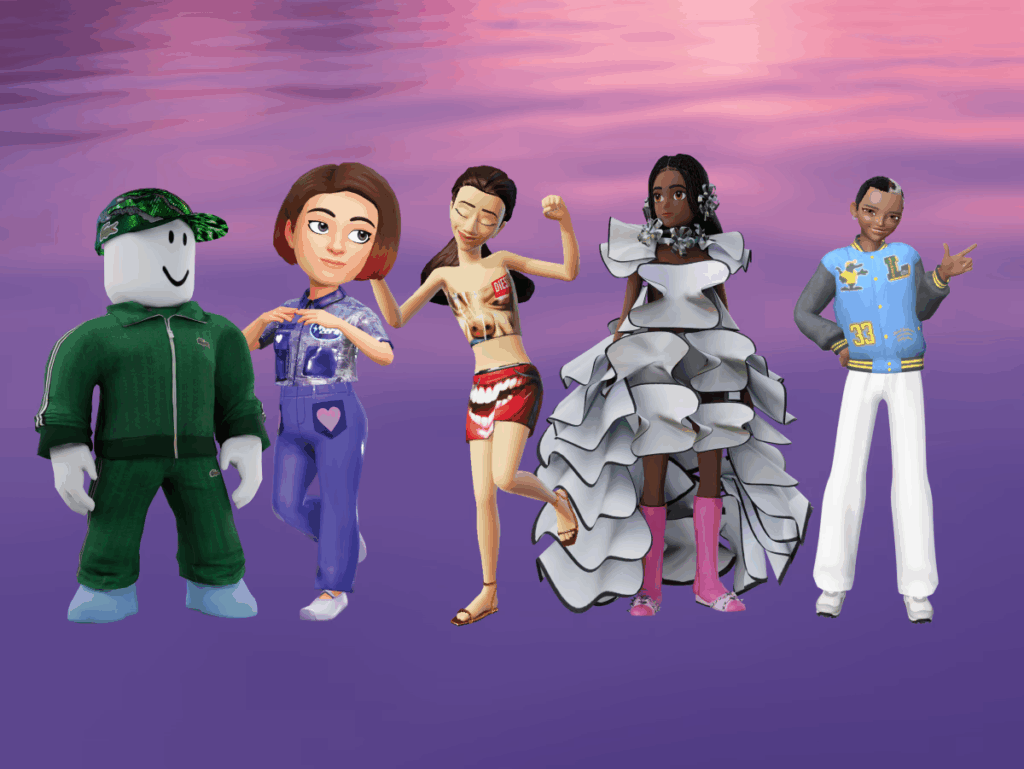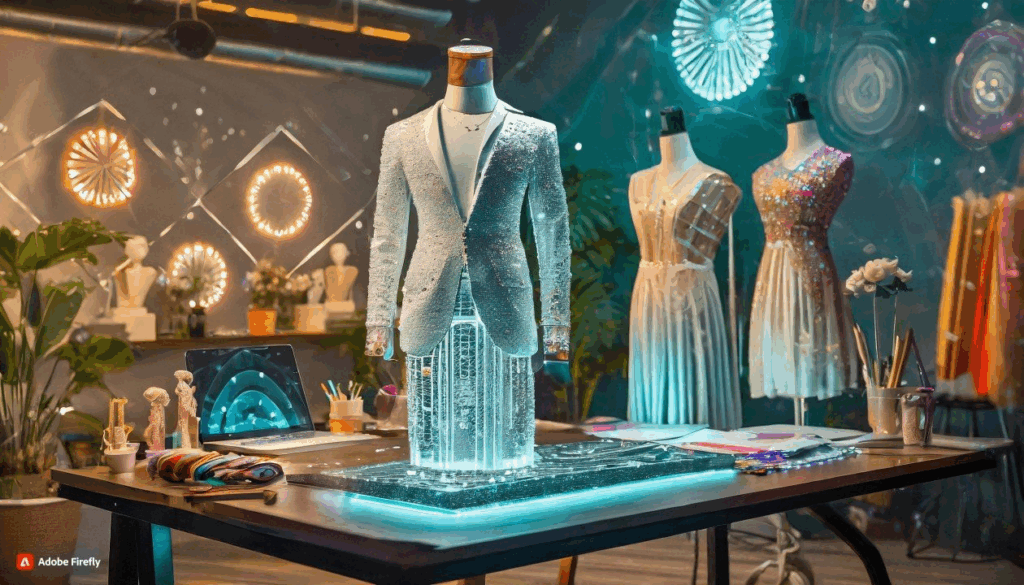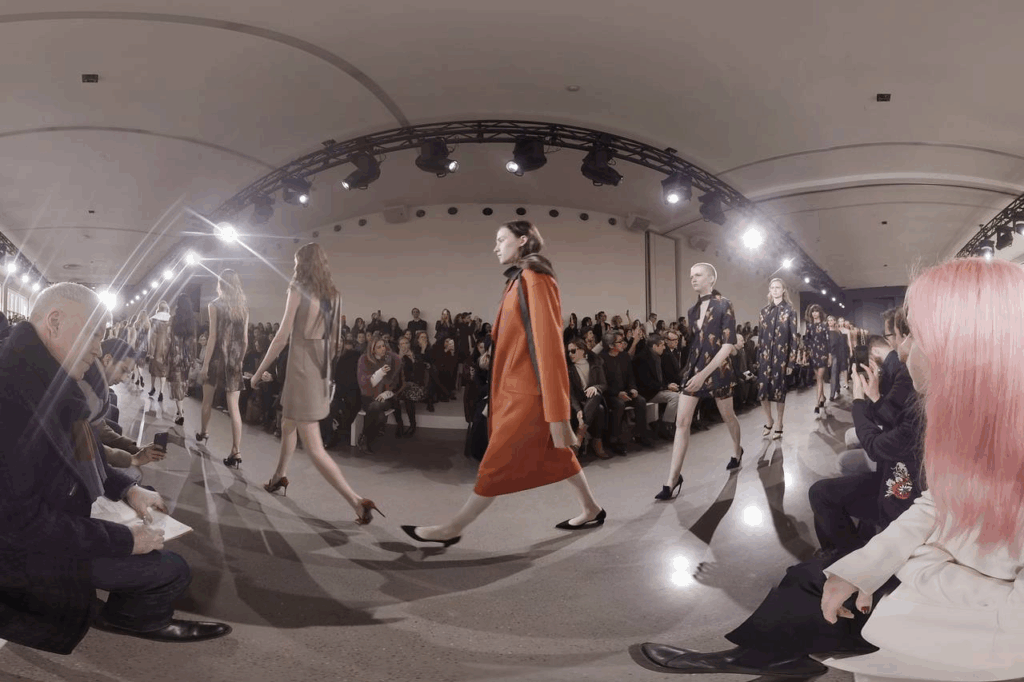Meta Description: Explore the future of the fashion industry through cutting-edge innovations in AI fashion, virtual fitting rooms, and tech-driven personalization. Discover how these changes are revolutionizing how we shop and style.
The world of fashion is undergoing a radical transformation driven by technology. As we step into a future where digital convenience meets creative expression, the lines between fashion and tech blur more than ever before. From artificial intelligence to augmented reality, fashion is entering a new era where customization, efficiency, and sustainability intersect. At the heart of this shift is AI fashion—a trend that’s redefining how we design, shop, and experience style.
1. AI Fashion: Smart Styling and Predictive Trends

AI fashion is changing the game by providing predictive analytics, intelligent design assistance, and smart styling recommendations. Algorithms can now analyze massive data sets—from runway shows to social media trends—to predict what styles are about to take off. Personal styling apps like Stitch Fix or The Yes are powered by AI that curates clothing selections based on your preferences, purchase history, and even your mood.
Designers are also embracing AI tools that generate new patterns, suggest materials, or simulate how a garment would drape on different body types. This reduces waste and speeds up the creative process. As AI fashion continues to evolve, it will offer deeper personalization and greater creative collaboration between man and machine.
2. Virtual Fitting Rooms: Try Before You Buy

One of the biggest challenges of online shopping is sizing and fit. Enter virtual fitting rooms—digital solutions that allow users to try on clothing using augmented reality or avatars. Retailers like Zara, ASOS, and Nike have started integrating virtual try-on tech that enables customers to see how garments would look on them in real time. Some systems use a body scan from your phone’s camera, while others rely on measurements to create a 3D model of your body.
This not only enhances convenience but also reduces returns, which are costly and environmentally taxing. Virtual fitting rooms are set to become a cornerstone of online retail, offering a seamless blend of experience and practicality.
3. Digital Clothing and NFTs: The Virtual Fashion Revolution

As the metaverse grows, so does the demand for digital self-expression. Brands are now creating digital-only garments that can be worn in virtual spaces like gaming platforms or social media. Digital fashion houses like The Fabricant and DressX are leading this trend, offering NFT (non-fungible token) outfits that users can own, trade, or showcase online.
Digital clothing produces zero waste and opens up unlimited creativity since there’s no need for physical production. Whether it’s a shimmering gown for your avatar or a limited-edition hoodie for your Instagram post, virtual fashion is carving out a lucrative and eco-conscious niche in the style economy.
4. Sustainability Powered by Technology

The fashion industry has long been criticized for its environmental footprint. Technology, particularly AI, is playing a key role in building a more sustainable future. AI can optimize supply chains, predict inventory needs, and even help design with sustainable materials. Brands are using data to reduce overproduction and develop biodegradable fabrics that align with green values.
Blockchain is also being used to track the ethical sourcing of materials, giving consumers more transparency than ever before. As shoppers become more conscious, tech-enabled sustainability will no longer be optional—it’ll be essential.
5. Personalized Shopping and Smart Mirrors

Imagine walking into a store and having a mirror suggest outfits based on your past purchases, current trends, or the weather forecast. Smart mirrors powered by AI are already a reality in high-tech retail environments. These mirrors display product recommendations, style tips, and even let you order items in different sizes without leaving the fitting room.
Online, AI recommendation engines use browsing and purchase history to tailor suggestions. Whether shopping in-store or from your phone, these tools create a curated experience that saves time and boosts satisfaction.
6. AR Runways and Virtual Fashion Shows

Fashion weeks are no longer limited to physical venues. In recent years, we’ve seen the rise of augmented reality (AR) and virtual fashion shows. Brands can now present collections globally without models even stepping foot on a runway. Viewers can attend shows in the metaverse, interact with garments, and buy pieces instantly from the virtual catwalk.
These immersive experiences not only broaden access but also allow for greater creative expression. Imagine watching a dress morph into different styles mid-show or seeing a design come to life with visual effects—this is the future of presentation in the digital age.
7. Data-Driven Design and Consumer Feedback

One of the most exciting frontiers of AI fashion is how data informs design. AI can analyze customer feedback, reviews, and social media sentiment to refine products before they hit the market. This ensures that collections are not only stylish but relevant and responsive to customer needs.
Designers are starting to incorporate customer data into every stage—from sketch to sample. This approach minimizes fashion waste and ensures that brands stay in tune with their audience.
8. The Democratization of Fashion Through Tech

Technology is leveling the playing field in fashion. Independent designers now have access to tools once reserved for industry giants. 3D design software, AI trend forecasts, and virtual storefronts allow anyone with a vision to create and share their work. Platforms like Shopify and Instagram Shopping are making it easier to sell directly to consumers.
This democratization is fostering more diversity and innovation, as voices from around the world bring fresh perspectives into the fashion space.
Conclusion
The integration of AI, AR, and digital tools into the fashion world isn’t just a trend—it’s the next evolutionary step. AI fashion is driving smarter production, personalized experiences, and greater sustainability. As we navigate this new digital landscape, those who embrace the change will not only survive—they’ll lead. The future of fashion is tech-infused, customer-centric, and endlessly creative.
Tags: AI fashion, future of fashion, virtual fitting rooms, fashion technology, digital fashion, smart shopping
